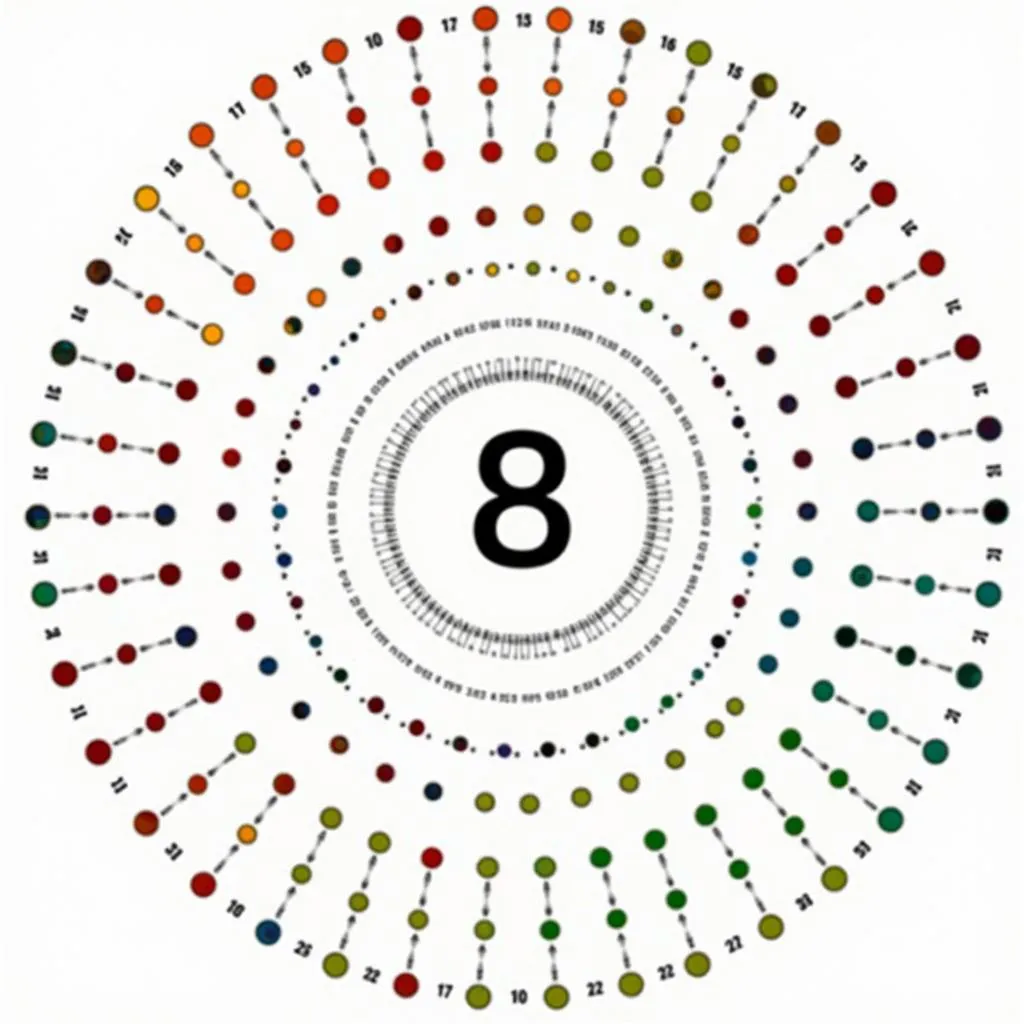Color blindness is a common condition that affects the ability to see colors in the usual way. While often referred to as “color blindness,” it rarely means seeing the world in black and white. Instead, most people with color blindness have difficulty distinguishing between certain shades of color. But does this difference in perception constitute a disability? Let’s delve into the intricacies of color blindness and explore its impact on daily life.
Understanding Color Blindness
Color blindness occurs when the cone cells in the eyes, responsible for color vision, don’t function properly. These cone cells contain pigments that are sensitive to different wavelengths of light. When one or more of these pigments are absent or defective, it disrupts the eye’s ability to perceive color accurately.
There are different types of color blindness, with red-green color blindness being the most prevalent. This type makes it challenging to differentiate between reds and greens. Other less common types include blue-yellow color blindness and complete color blindness (achromatopsia).
Living with Color Blindness
While color blindness is often a lifelong condition, most individuals adapt and develop strategies to navigate the world around them. However, the impact of color blindness on daily life can vary significantly depending on its severity and the specific colors affected.
Challenges Faced by Color Blind Individuals:
- Clothing and Fashion: Matching clothes or identifying specific colors can be difficult.
- Driving: Recognizing traffic lights and road signs can pose challenges.
- Art and Design: Appreciating the full spectrum of colors in paintings or design work might be limited.
- Cooking: Determining the doneness of meat or the ripeness of fruits based on color cues can be tricky.
- Education: Some educational materials rely heavily on color coding, making it harder for color blind students to process information.
 Color Blindness Test Chart
Color Blindness Test Chart
Color Blindness and Disability
The question of whether color blindness constitutes a disability is complex and depends on various factors.
- Severity: Mild forms of color blindness may have minimal impact on daily activities, while more severe cases can present significant challenges.
- Occupation: Certain professions, such as pilots, electricians, and designers, require accurate color perception. In these cases, color blindness might be considered a disability as it can hinder job performance.
- Legal Definition: The definition of disability varies across countries and jurisdictions. Some countries recognize color blindness as a disability and offer legal protections and accommodations, while others do not.
Accommodations and Support
Several accommodations can help individuals with color blindness overcome challenges and participate fully in various aspects of life.
- Color Blindness Glasses: These specialized glasses use filters to enhance color perception, making it easier to distinguish between certain shades.
- Assistive Technology: Software and apps can adjust color schemes on computers and mobile devices, making digital content more accessible.
- Awareness and Education: Raising awareness about color blindness and educating others about its impact can foster understanding and inclusivity.
 Color Blind Friendly Website Design
Color Blind Friendly Website Design
Conclusion
Is color blindness a disability? The answer is nuanced and depends on the individual, the severity of the condition, and the specific context. While many individuals with color blindness live fulfilling lives with minimal disruption, others face significant obstacles. Recognizing these challenges and providing appropriate accommodations is crucial for ensuring equal opportunities and a more inclusive society. By fostering understanding and embracing diversity, we can create an environment where everyone can thrive, regardless of their color vision.
FAQ
1. Can color blindness be cured?
Currently, there is no cure for inherited color blindness. However, gene therapy research shows promise for potential treatments in the future.
2. Can women be color blind?
While color blindness is more common in men, women can also be affected. However, they are more likely to be carriers of the gene without experiencing symptoms themselves.
3. Are there different levels of color blindness?
Yes, color blindness ranges in severity from mild to severe. Some individuals may only have difficulty distinguishing between subtle shades, while others may not see certain colors at all.
**4. Can color blindness get worse over time?
Inherited color blindness typically remains stable throughout life. However, certain eye conditions or medications can cause acquired color vision deficiencies that may worsen over time.
5. Where can I get tested for color blindness?
An eye doctor can conduct a comprehensive eye exam, including color vision testing, to diagnose and assess color blindness.
Need Support?
If you have concerns about color blindness or need assistance with color-related challenges, our team at Color Box Hà Nội is here to help. Contact us at 0373298888 or email us at [email protected]. You can also visit our office at 86 Cầu Giấy, Hà Nội. Our dedicated customer service team is available 24/7 to provide personalized guidance and support.

